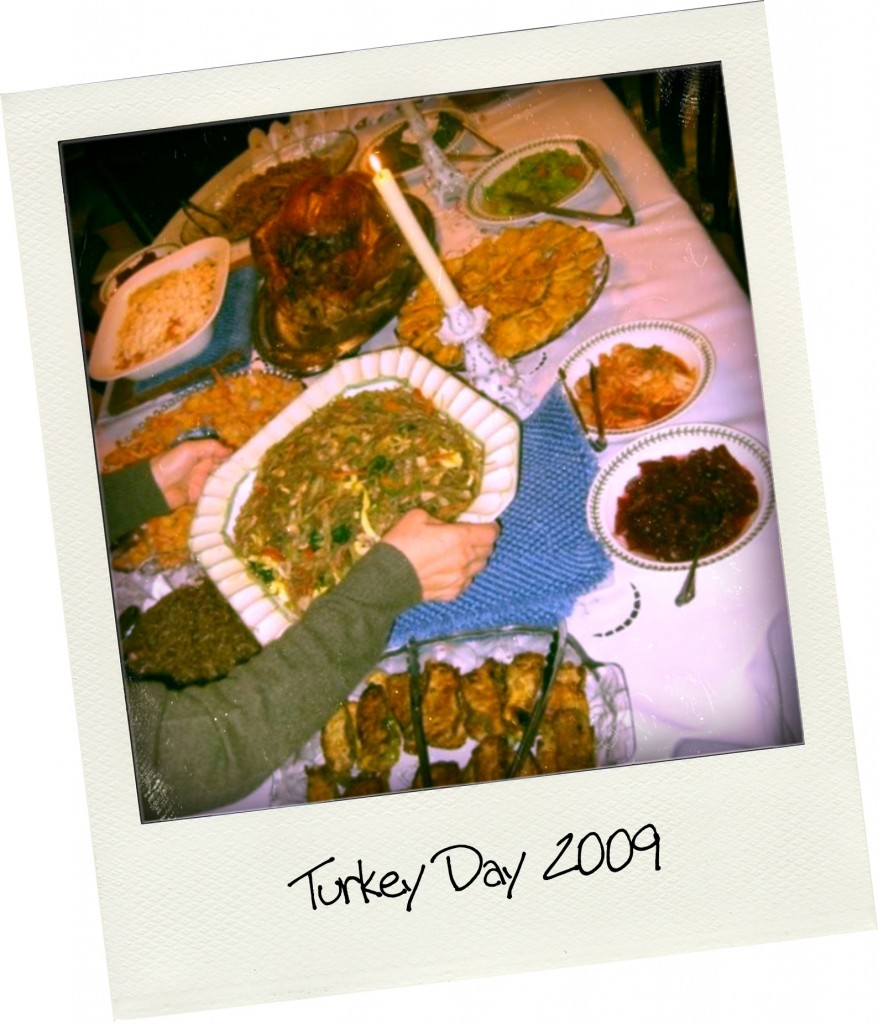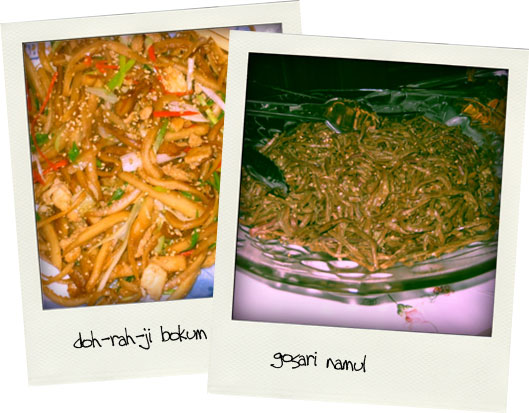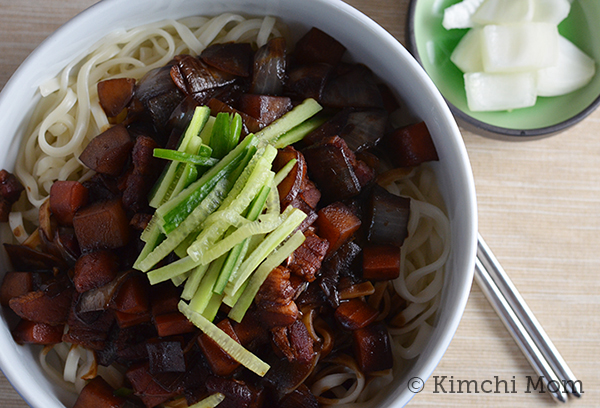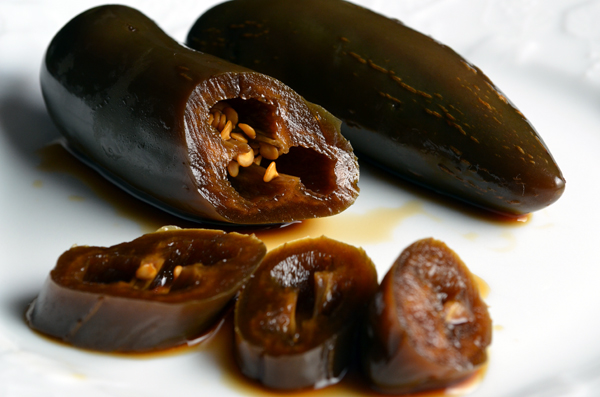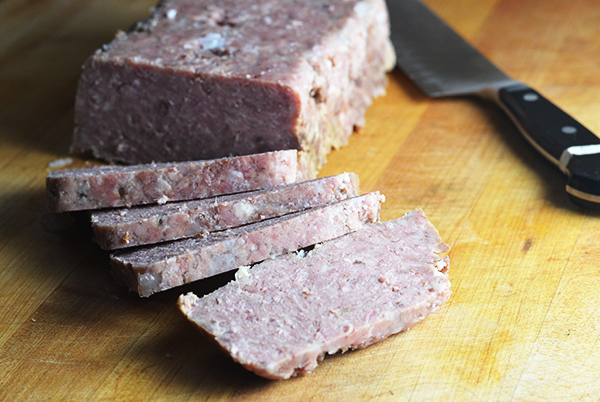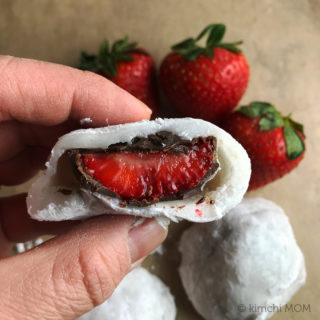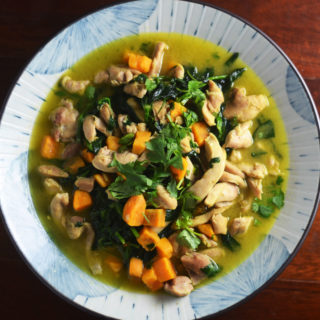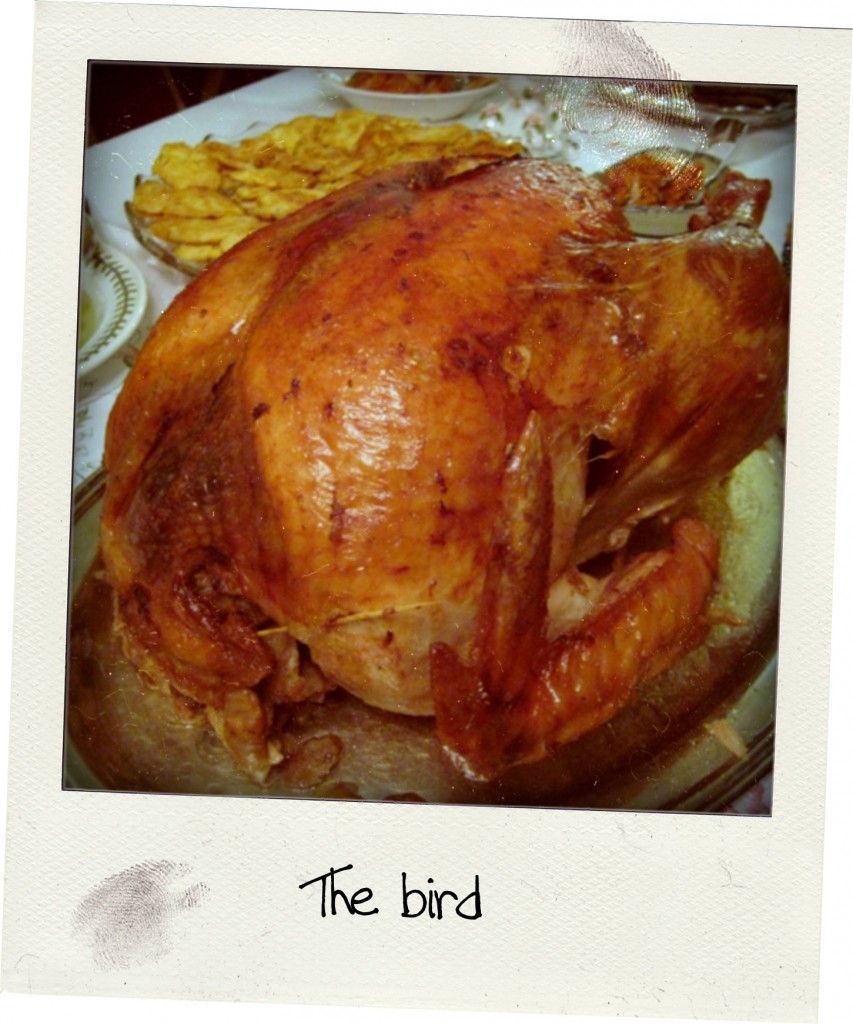 “I bought a 22 pound turkey. It was the biggest one they had!”
“I bought a 22 pound turkey. It was the biggest one they had!”
My mom always announced the weight of the bird as if to declare the start of the holidays. The huge Butterball, still encased in plastic, bobbed in the one of the two basins of her stainless steel sink. The size of the turkey always bothered me, but it probably represented (whether consciously or subconsciously) the bounty of blessings my parents have had since they immigrated to this country over 40 years ago.
With fall around the corner and Thanksgiving on its coattails, I’ve actually started thinking about this year’s menu. It is my favorite holiday and one where the feast for our family is truly Korean American – not in the fusion sense, but in the smorgasbord sense. We never celebrated Chuseok, or Harvest Moon Festival (Korea’s Thanksgiving) when I was growing up, primarily because Korean foodstuff wasn’t readily available and my parents found it a hassle to follow the Lunar calendar. In their efforts to assimilate into their new country, they decided not to celebrate the Korean holidays and adopted the American Thanksgiving.
Our Thanksgiving feasts included the obligatory (hormonally and genetically modified) Butterball turkey, cranberry sauce, gravy, and stuffing. I eventually became responsible for this part of the meal which over the years has been an opportunity for much experimentation. My mom started preparing the other 10 – 12 Korean dishes two days before the holidays, many of them being vegetable dishes. My favorite was a trio of vegetables called sahm sek namul, which literally translates as “three color vegetables.” The color white was represented by doh-rah-ji bokum, a sautéed bellflower root. Brown was represented by gosari namul, sautéed fernbracken. And green was represented by chi-namul, sauteed Korean bitter greens. Even as a kid, I really savored these dishes and loved how well the sharp bitterness of the chi-namul and meatiness of the doh-rah-ji complimented, never overwhelmed, the more subtle or bland flavor of the turkey and the savory, saltiness of the stuffing and gravy. The gosari namul had an earthy flavor and the texture came close to “pencil thin” asparagus. One very full forkful was followed by a bit of Ocean Spray cranberry sauce alternated with kimchi. Though, if the cranberry sauce and kimchi merged on the same spoonful, it was not a tragic collision. I didn’t mind the clash of sour, sweet, tart, and salty. It all worked. The textures and flavors of the Korean and American dishes complemented each other so well. How could you have Thanksgiving dinner any other way?
This year Thanksgiving is going to be celebrated at our new house. Although it’s not the first Thanksgiving meal I’ve prepared, it’s the first one that will include some of my mom’s Korean dishes. This holiday feast best represents our family as Korean Americans. I’m sure this is a universal sentiment with families and their respective cultures. There are so many stories behind family traditions and dishes that give us an idea of where we came from. Every dish has a bit of each generation before us. It is clear to me that my mom’s passion for cooking and food has trickled down to me. I really can’t wait to prepare this year’s feast and am looking forward to my two toddlers to take part in this family holiday. While they may scream for mac ‘n cheese this year, I know (with time) they will inherit my family’s passion for food in all things Korean and American.
Note: This post is an entry for the first challenge of Project Food Blog. If you made it this far in the post and liked what you read, then please take a moment to register on Foodbuzz and follow my progress. Voting begins on Monday, September 20th and ends on the 23rd.
